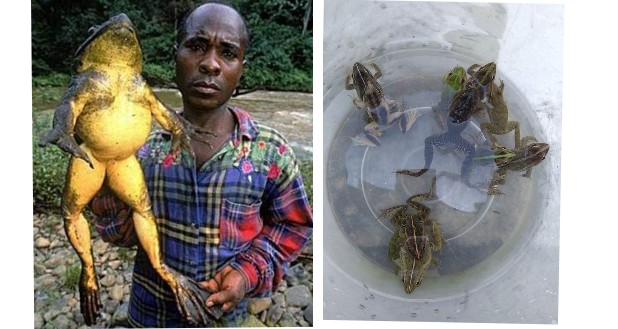How to Start Frog Farming in Kenya for Export and Making Millions of Money
Frog farming is a lucrative business venture that has gained popularity in Kenya due to its high demand in both local and international markets. This comprehensive guide provides detailed insights into starting a frog farm in Kenya for export, covering what frog farming is, how to start, legal and environmental requirements, reasons for frog farming, the market for frogs, the price of frogs, and the benefits or uses of frogs.
Introduction to Frog Farming
Frog farming involves the breeding and rearing of frogs for commercial purposes. Frogs are highly sought after for their meat, which is considered a delicacy in many parts of the world. Additionally, frogs are used in traditional medicine and research, further increasing their value.
Understanding the Legal and Environmental Requirements
Before starting a frog farm in Kenya, it is important to understand the legal and environmental requirements. You will need to obtain permits and licenses from the relevant authorities, such as the Kenya Wildlife Service (KWS) and the Ministry of Agriculture. Additionally, you must ensure that your farm complies with environmental regulations to protect the natural habitats of frogs.
Read More:How to Start Caterpillar Farming in Kenya and Make Millions of Money
Setting Up Your Frog Farm
To start a successful frog farm, you will need suitable land with access to clean water sources. You will also need to construct ponds or enclosures for housing the frogs. It is important to design the farm in a way that provides optimal living conditions for the frogs, including appropriate temperature and humidity levels.
Choosing the Right Species of Frogs
There are many species of frogs that can be farmed, but not all are suitable for commercial purposes. It is important to choose species that are in high demand and can thrive in captivity. Some popular species for frog farming include the African clawed frog and the bullfrog.
Read More:How To Start and Make Millions Of Money From Chameleon Farming in Kenya.
Feeding and Caring for Your Frogs
Frogs are carnivorous and require a diet rich in protein. They can be fed a variety of foods, including insects, worms, and small fish. It is important to provide a balanced diet to ensure the health and growth of your frogs. Additionally, you must regularly clean the ponds or enclosures to maintain a hygienic environment for the frogs.
Health Management and Disease Prevention
Like any livestock, frogs are susceptible to diseases. It is important to monitor the health of your frogs regularly and take preventive measures to avoid disease outbreaks. This includes maintaining good hygiene practices and quarantining sick frogs to prevent the spread of disease.
Marketing and Selling Your Frogs
Once your frogs are ready for sale, you will need to market them effectively to attract buyers. You can sell your frogs to local markets, restaurants, and wholesalers. Additionally, you can explore export opportunities to international markets, where the demand for frogs is often higher.
Export Opportunities and Potential Markets
Kenya has a growing export market for frogs, particularly in Europe and Asia. To export frogs, you will need to comply with international trade regulations and obtain the necessary permits and certificates. Exporting frogs can be highly profitable, as they are often sold at a premium in international markets.
Pricing Strategies for Maximum Profit
The price of frogs can vary depending on factors such as size, species, and market demand. On average, a kilogram of frogs can be sold for around $20 to $30 in international markets. Prices can be higher for larger frogs or those considered more exotic.
Countries to Export Frogs
1. United States: The United States is a significant importer of frogs, particularly for the restaurant and food industry. States like Louisiana and Florida have a high demand for frogs.
2. **France**: France is known for its culinary appreciation of frogs, especially in dishes like frog legs. It’s a lucrative market for frog exporters.
3. **Belgium**: Belgium is another European country where frog legs are a delicacy. There’s a demand for high-quality frogs for the food industry.
4. **China**: China has a large market for frogs, both for consumption and traditional medicine. It’s a growing market with opportunities for exporters.
5. **Japan**: Japan is known for its demand for exotic foods, including frogs. There’s a niche market for high-quality frogs in Japan.
6. **Singapore**: Singapore imports frogs for its food industry. It’s a strategic location for exporters looking to access the Southeast Asian market.
7. **United Arab Emirates**: The UAE has a diverse food culture and imports frogs for its restaurants and hotels. It’s a potential market for frog exporters.
8. **Netherlands**: The Netherlands imports frogs for its food industry, particularly for restaurants and specialty food stores.
The Benefits and Uses of Frogs
Frogs offer several benefits beyond their commercial value. They play a crucial role in the ecosystem by controlling insect populations, which helps in pest control. Frogs also serve as indicators of environmental health, as their presence or absence can indicate the health of an ecosystem. Additionally, frogs are used in traditional medicine for various ailments, further highlighting their importance.
Conclusion
Frog farming in Kenya offers a lucrative business opportunity for entrepreneurs looking to tap into the growing demand for frogs. By understanding the legal and environmental requirements, choosing the right species, and implementing sound farming practices, you can start a successful frog farm and potentially make millions of money through exports.
F
